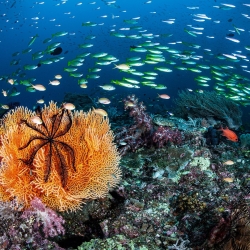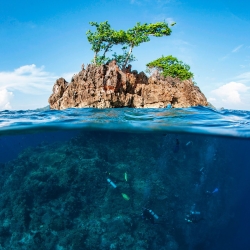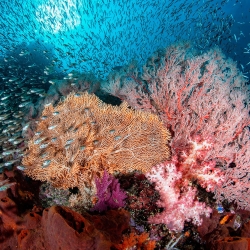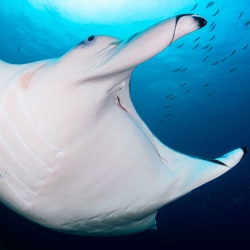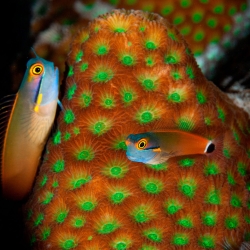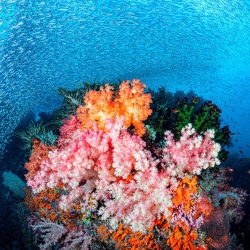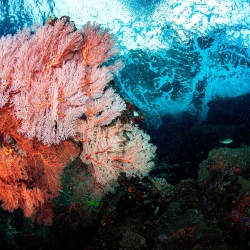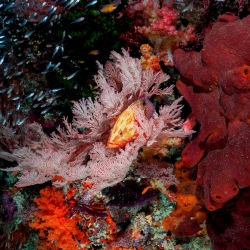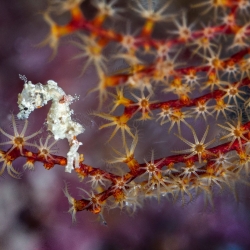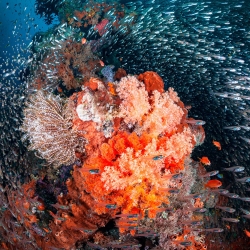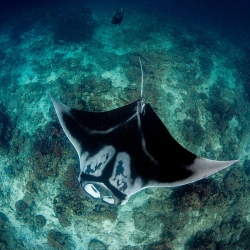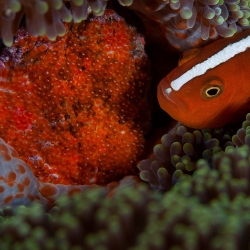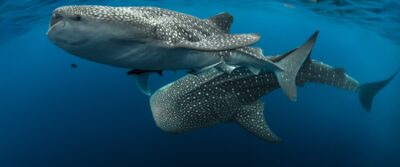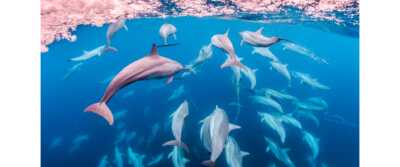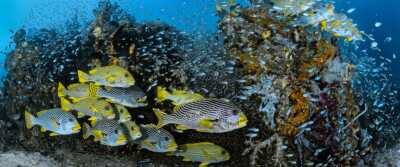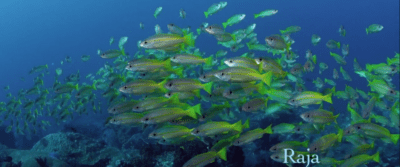Reefscape with Snappers and Damselfish
Jose Castellano
Jose Castellano
First time I heard about Raja Ampat was back in 2007 while having breakfast at a café in Kaoh Lak, Thailand. Somebody brought news of a remote place somewhere in Indonesia that was supposed to be full of pristine reefs, almost no divers and, apparently, the best scuba diving in the world. As you can imagine, that alone was enough to catch my attention, but there was more to it. There was also news about scientists being amazed by the extraordinary biodiversity of the place and that, my being a biologist by education, sparked even more my curiosity.
The name of Raja Ampat stayed with me since that conversation and I was set to get there at some point. It was not until three years later that I had the chance to visit Raja Ampat and since then, I have been coming back every year as a dive guide and biologist, staying for months at a time and feeling so lucky to be able to enjoy such an amazing place.
As I mentioned before, apart from being a passionate diver, I am a biologist too. In my case, it was biology what brought me into scuba diving and although scuba diving has become one of the most important things in my life, it was my fascination for the marine life that made me want to pursue a career in the diving industry. And if we talk about marine life, Raja Ampat is as good as it can get!
It is a fact that Raja Ampat is one of the most biodiverse places in our oceans and that makes it the perfect playground for any biologist or marine life enthusiast like me. Behind those exuberant reefs full of fish and vibrant colors lays a complex ecosystem of thousands of different organisms, each and every of them a masterpiece of nature itself, living and dying together and putting on a show difficult to find elsewhere in the ocean. This is what has fascinated me about Raja Ampat since I arrived there ten years ago, the overwhelming dimension of that biodiversity, and this is what brings me back there year after year.
One of my favorite dive sites in Raja Ampat is called Candy Store, in the Daram islands area off Misool. Its walls covered with gigantic sea fans, black coral bushes and colorful soft corals are one of the most beautiful things I have ever seen, and hovering out in the blue while big schools of fish move around the reef is just an unbelievable experience. I couldn’t have thought of a better name for that dive site, although I would extend that name to the whole Raja Ampat, because this is how I feel every time I go diving there: like a kid in a candy store.
Jose Castellano is a biologist from Spain who has spent most of his last fourteen years diving all-over South-East Asia, especially Indonesia. He is and avid photographer and the founder of Biology for Divers, a project with which he wants to share his passion and knowledge about the sea.





































